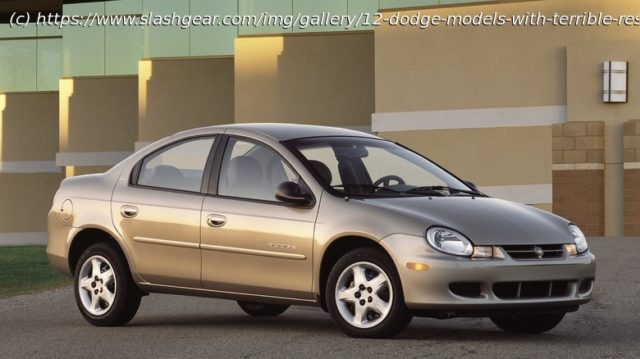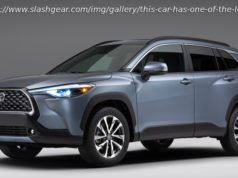Dodge may seem like a reliable, affordable brand to buy into, but if you’re looking for something to retain it’s value over time, you may want to think twice.
Buying a new car is one thing. Holding onto its value is a whole different game, especially if you’re looking at Dodge. Sure, the brand’s known for power, attitude, and dope designs — no one’s arguing that. But when it’s time to sell or trade in? That edge doesn’t always carry over to resale value.
While Dodge isn’t the worst out there, it’s definitely not leading the pack, and that’s something a lot of buyers won’t realize until it’s too late. In this list, we’re taking a closer look at which of the brand’s models lose value the fastest, how steep the drop-off really is, and how they perform once that «new car» glow wears off. Mileage, condition, demand, and whether the model’s been discontinued all play a part in what it’s worth down the road. And since things tend to level out a bit around the five-year mark, a used 2023 model might be your safest bet.
It’s not always about reliability — you know. Sometimes it’s just bad timing, outdated tech, or how fast the market moves. Even cars with solid specs can be tough sells if the buzz fades too quickly. So if you’re eyeing a Dodge and thinking long term, here’s a breakdown of the ones that take the hardest resale hits.Dodge Intrepid
At first glance, the Dodge Intrepid looked like it had what it needed to win people over. It had space, style, and surprisingly decent fuel economy for its size — 18 mpg in the city and 28 on the highway. For a big sedan in the late ’90s and early 2000s, that wasn’t bad at all. But even with all of that going for it, that early promise still didn’t stick. Over the years, the Intrepid quietly became one of Dodge’s most disappointing long-term plays — and unfortunately, the resale market remembers.
Its 2.7-liter V6 became known for engine sludge issues, and that led to sudden, costly failures — even for owners who kept up with maintenance. Then came transmission headaches, cracking dashboards, and a growing list of complaints that just never went away. By the time Dodge pulled the plug in 2004, the damage was already done — so much so that even used ones were red-flagged.
According to Kelley Blue Book, a 1998 model can bring in around $1,317 on a good day, with trade-in offers often sitting near $631. Even the ones in good shape top out near $2,700 in high retail, and don’t think it gets better in later models, because it doesn’t. The 2001 model? That one rarely climbs past $315 and can dip as low as $235 on trade-in.Dodge Neon
The Dodge Neon had one job: be a cheaper alternative to the Civic and Corolla. And honestly, it actually pulled it off. Launched in 1995, the car came with a small 2.0-liter engine, 132 hp, room for five, and a price that made it accessible to anyone. Dodge stuck with it for over a decade, with only a few mild updates in years like 2000 and 2003. But its decent mileage and minor tweaks weren’t enough to keep it afloat and over time, that started to haunt its resale value.
Even when Dodge tried to dress it up with sportier trims like the R/T and the turbocharged SRT-4, the Neon still couldn’t shake its budget-car roots. Its reliability was hit or miss and its build quality didn’t age well, and meanwhile its competitors kept raising the bar. Buyers caught on.
Today, the resale numbers are pretty rough across the board. A 2005 model often struggles to reach $1,700, with trade-ins barely reaching more than $500. Some 2004 models have dipped as low as $224, depending on condition and mileage. Step back a bit to a 1998 Neon, and you’re looking at resale values near $1,100, while trade-in offers often come in under $450.
Even the Dodge Dart — which wasn’t exactly a resale darling too — holds onto its worth better. While Dart resale numbers often stretch into the $14,000 range, the Neon tops out well below that, barely cracking $6,047 at best.Dodge Nitro
The Dodge Nitro was one of those SUVs that tried to sell itself on attitude alone. It was boxy and bold, with a name that sounded ready to explode onto the scene. And when it first hit the road back in 2007, it kind of did. Built on the Jeep Liberty platform, it came with V6 grunt, optional four-wheel drive, and aimed for that in-between sweet spot of compact and mid-size SUVs. Still, none of that saved it from tanking in resales, and before you know it, the Nitro was discontinued in 2011.
Let’s talk numbers. The 2011 Nitro started off with an MSRP hovering between $21,590 and $28,995. Not cheap. But fast-forward to now, and you would be lucky to even get a fraction of that back. Kelley Blue Book puts private sale values at just $4,021 — down from $6,145 in 2022. Trade-in values are even tougher to swallow, sinking to just $1,206. Edmunds tells a similar story that even a spotless example won’t you fetch more than $7,306 from dealers — and that’s only for the best-case scenarios.
Earlier models? They’ve fared even worse. A 2007 Nitro can bring in as little as $604 on trade-in — pocket change compared to its original sticker price. On average, a used Nitro now pulls around $5,656, which is over 75% lower than the average used car on the market. For context, that’s light-years behind more dependable rivals like the CR-V or RAV4.Dodge Dart
When Dodge brought the Dart name back in 2013, it seemed like a solid comeback.






